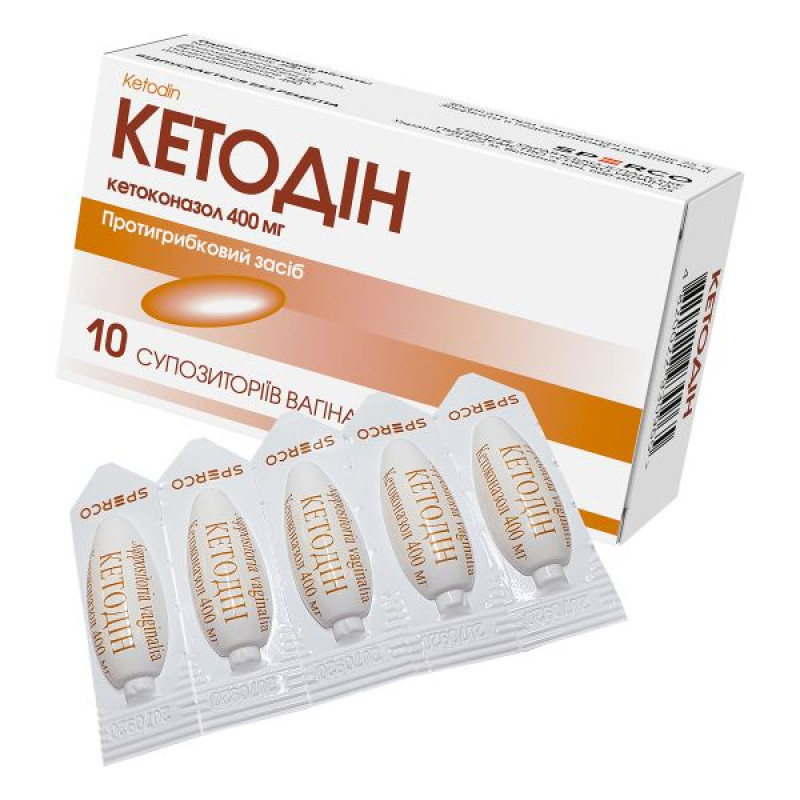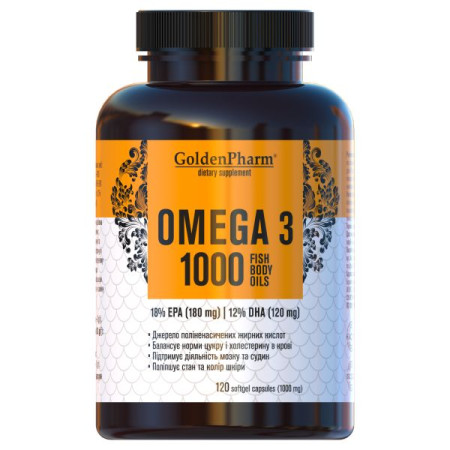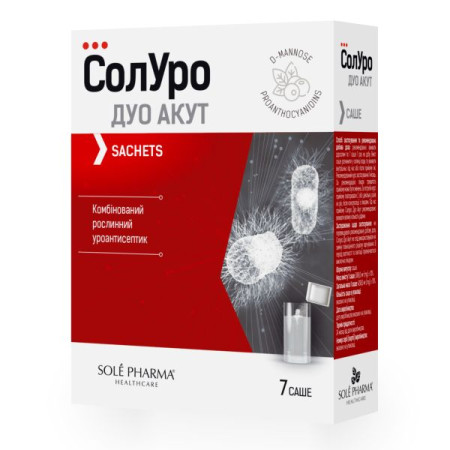Ketodin vaginal suppositories 400 mg strip No. 10

Instructions Ketodin vaginal suppositories 400 mg strip No. 10
Composition
active ingredient: ketoconazole;
1 suppository contains 400 mg of ketoconazole;
excipients: polyethylene glycol 400, polyethylene glycol 4000, butylhydroxyanisole (E 320).
Dosage form
Vaginal suppositories.
Main physicochemical properties: suppositories from white to almost white in color, torpedo-shaped.
Pharmacotherapeutic group
Antimicrobial and antiseptic agents used in gynecology. Imidazole derivatives.
ATX code G01A F11.
Pharmacological properties
Pharmacodynamics.
Ketoconazole is a synthetic derivative of imidazoledioxolane. It has a pronounced fungicidal and fungistatic effect on dermatophytes (Trichophyton spp., Epidermophyton floccosum, Microsporum spp.), yeast fungi (Candida spp., Pityrosporum spp., Torulopsis spp., Cryptococcus spp., Rhodotorula spp.), dimorphic and higher fungi (zoomycetes). Less sensitive to ketoconazole are Aspergillus spp., Sporothrix schenckii, some Dermatiaceae, Mucor spp. and other fucomycetes, with the exception of Entomophthrales. Ketoconazole is also active against gram-positive cocci (Staphylococcus spp., Streptococcus spp.). The mechanism of its action is to inhibit the biosynthesis of ergosterol and change the lipid composition of the fungal membrane, which leads to their lysis. Ketodin is also active against pathogens resistant to antifungal antibiotics (nystatin, levorin), as well as clotrimazole. The development of secondary resistance during treatment with ketoconazole has not been observed so far.
Pharmacokinetics.
When administered intravaginally, only a small amount (< 1%) of ketoconazole enters the systemic circulation. The maximum plasma concentration in women after intravaginal administration of 400 mg of ketoconazole ranges from 0 to 10.7 ng/ml, which is considered trace and does not have a systemic effect.
Indication
Acute and chronic recurrent vulvovaginal candidiasis; prevention of vaginal fungal infections with reduced body resistance and against the background of treatment with drugs that disrupt the normal vaginal microflora.
Contraindication
Hypersensitivity to ketoconazole or other components of the drug.
Interaction with other medicinal products and other types of interactions
When ketoconazole is used simultaneously with rifampicin and isoniazid, the concentration of ketoconazole in the blood plasma decreases. When used simultaneously with cyclosporine, indirect anticoagulants and methylprednisolone, ketoconazole may increase the concentration of the latter in the plasma. The practical significance of these interactions in treatment with ketoconazole in the form of vaginal suppositories is unknown.
Application features
In rare cases, local allergic reactions in the sexual partner are possible. To reduce the risk of recurrence of the disease, simultaneous treatment of the sexual partner is recommended. Contact with latex preparations (contraceptive diaphragms, condoms) should be avoided due to the reduced reliability of mechanical contraception, therefore the possibility of pregnancy or infection with sexually transmitted diseases cannot be ruled out. During treatment, sexual intercourse should be abstained.
Ketodine is recommended for use at night, as the drug has an osmotic and drainage effect, which is accompanied by increased vaginal discharge. It is recommended to use sanitary pads at night during treatment with Ketodine.
If hypersensitivity reactions develop, the drug should be discontinued.
Use during pregnancy or breastfeeding
Although systemic absorption of ketoconazole is extremely low or absent after intravaginal administration, there are no adequate controlled clinical studies on the safety of Ketodine in pregnant women. Ketodine should not be used in the first trimester of pregnancy. In the second and third trimesters and during breastfeeding, the drug should be used only if the expected benefit to the mother outweighs the potential risk to the fetus or child.
Ability to influence reaction speed when driving vehicles or other mechanisms
Does not affect.
Method of administration and doses
Release the suppository from the strip and insert deeply into the vagina in a supine position with knees bent and legs pulled to the chest or squatting. Suppositories should not be cut into parts, as such a change in the storage conditions of the drug may lead to a disruption in the distribution of the active substance. Prescribe 1 suppository per day before bedtime for 3-5 days. If necessary, repeat the course of treatment until clinical and laboratory recovery. In chronic candidiasis, use 1 suppository for 10 days.
Children.
There is no experience with the use of ketoconazole in the form of vaginal suppositories in children.
Overdose
In case of local overdose, hyperemia, burning, itching, irritation of the vaginal mucosa may occur. In this case, douching with water is recommended.
Adverse reactions
Side effects occur rarely and quickly disappear after discontinuation of the drug.
From the digestive tract: rarely - nausea, abdominal pain.
From the nervous system: rarely - dizziness.
Hypersensitivity reactions: rarely - urticaria, anaphylactic and anaphylactoid reactions, angioedema.
Expiration date
3 years.
Do not use the drug after the expiration date indicated on the package.
Storage conditions
Store at a temperature not exceeding 25 ° C. Keep out of the reach of children.
Packaging
5 suppositories in a strip, 2 strips in a cardboard pack.
Vacation category
Without a prescription.
Producer
Joint Ukrainian-Spanish enterprise "Sperco Ukraine".
Location of the manufacturer and its business address.
21027, Ukraine, Vinnytsia, 600-anniversary St., 25.
Phone: + 38(0432)52-30-36. E-mail: trade@sperco.com.ua
www.sperco.com.ua
There are no reviews for this product.
There are no reviews for this product, be the first to leave your review.
No questions about this product, be the first and ask your question.









